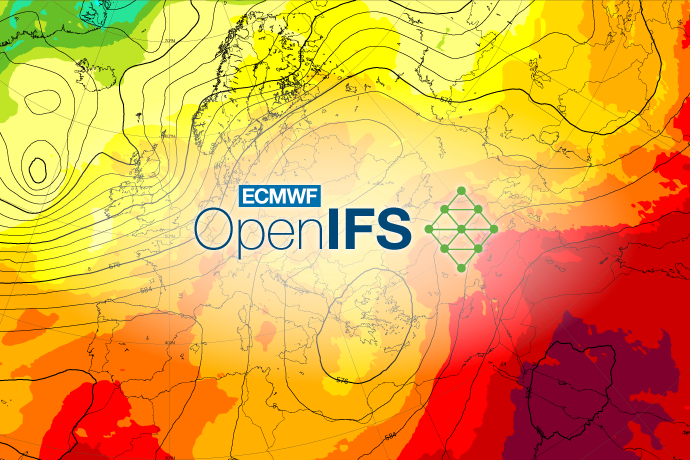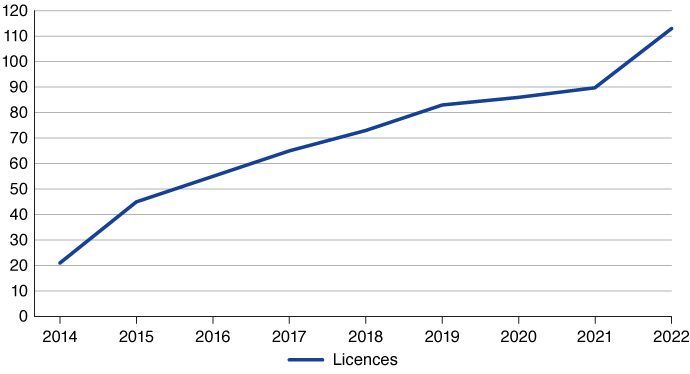

OpenIFS, a supported and easily accessible version of ECMWF’s Integrated Forecasting System (IFS) provided for research and education, is to be upgraded to the latest IFS model cycle by the end of this year.
It will have the forecast capabilities of IFS Cycle 48r1, which became operational in June this year. As before, OpenIFS 48r1 will not include observational data processing and assimilation or the NEMO ocean model.
The current version of OpenIFS is based on IFS Cycle 43r3, which became operational in 2017. The upgrade heralds the start of more frequent model releases, planned about every two years. “These will be staggered so that users who want to continue with a previous cycle for a while can do so,” says Adrian Hill, one of the developers of OpenIFS.
OpenIFS is distributed under a free licence agreement. A beta release of OpenIFS 48r1 was made available for testing by some licensees in September.
Main changes
Many infrastructure and code changes had to be implemented to move from OpenIFS 43r3 to 48r1. These changes have enabled much closer alignment between the IFS and OpenIFS, which will facilitate easier model upgrades.
“Users will essentially benefit from all the improvements incorporated in the IFS upgrades between model cycles 43r3 and 48r1,” says ECMWF’s Marcus Köhler. “That includes the ability to run the model in double or single precision, and users benefit from improvements such as, for example, moist-physics upgrades and a new multi-layer snow scheme.”

The figure shows the difference in the root-mean-square error (RMSE) of snow depth forecasts at day 5 between multi-layer snow in IFS Cycle 48r1 and single-layer snow, compared with SYNOP weather station values in the 2019/20 winter. Blue colours indicate an improvement when multi-layer snow is used.
Users of the new version will also benefit from an upgrade to the OpenIFS Data Hub, which provides data for initial starting conditions to carry out forecast experiments with the new model.
In addition, it will be possible to build a single-column model directly from the OpenIFS code. “This is a tool to research and test the physics of the model in a vertical column,” Adrian explains.
Atmospheric composition modelling
It will also be possible to use OpenIFS 48r1 for applications that investigate the composition of the Earth’s atmosphere and its interaction with meteorology.
Atmospheric composition was initially introduced in 2022 as a separate extension of OpenIFS in the OpenIFS/AC project. The aim was to enable the simulation of chemical compounds and aerosols and their interaction with other atmospheric processes.
“OpenIFS 48r1 will bring together the capabilities of OpenIFS and OpenIFS/AC into one repository,” Adrian says. “The aim of this is to have a consistent system including atmospheric composition.”
Wide use
OpenIFS is used for a wide range of activities. Many researchers use it for their own development of numerical weather prediction and Earth system models. A prominent example of this is the EC-Earth community, a European consortium that uses OpenIFS as part of its next-generation Earth system model for climate prediction.
Researchers and academics in universities also use OpenIFS as a diagnostic tool for their meteorological research, and for teaching of atmospheric modelling and practical applications for numerical weather prediction.
“We hope that OpenIFS 48r1 will bring improvements for all those groups because it uses the most recent forecasting system at ECMWF,” Marcus says.

The graph shows the number of OpenIFS licences active in any year since 2014.
